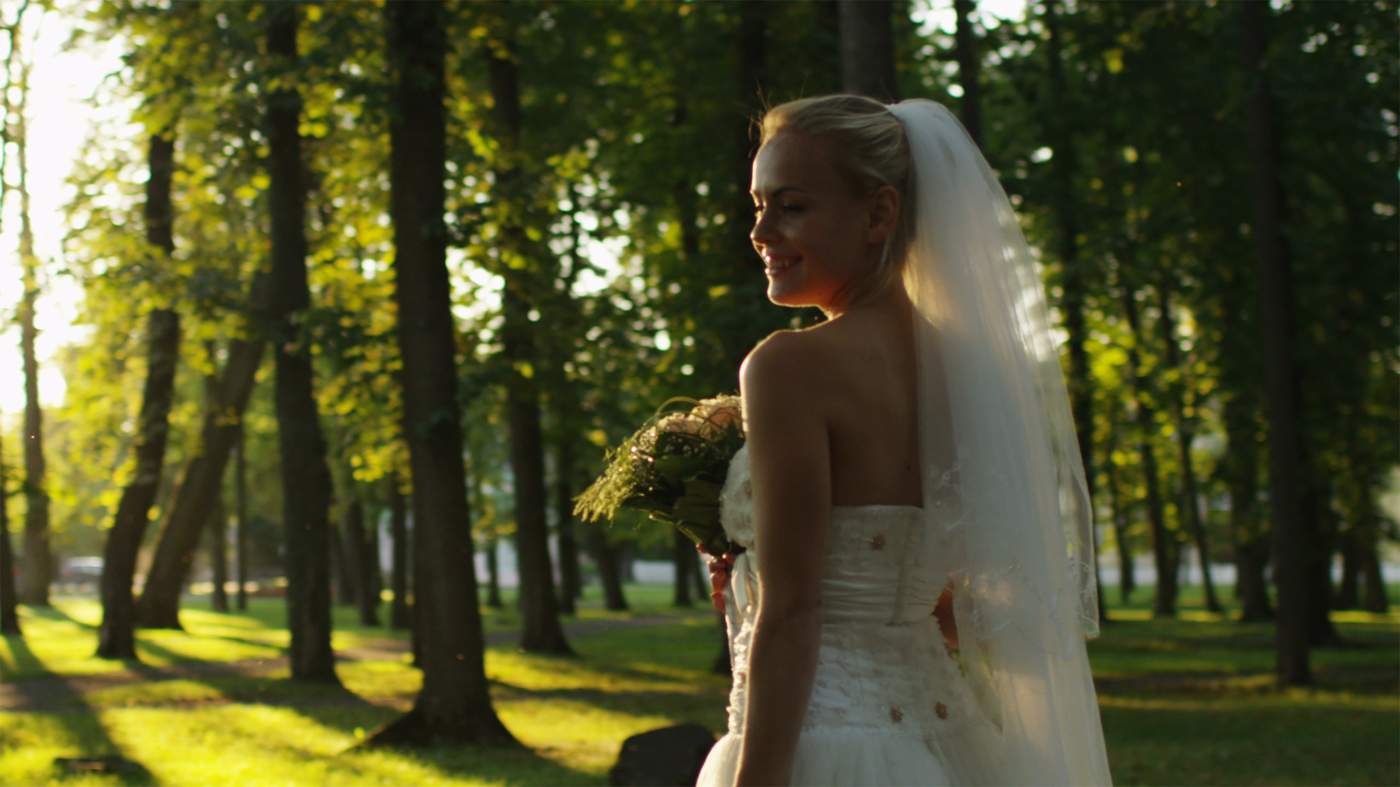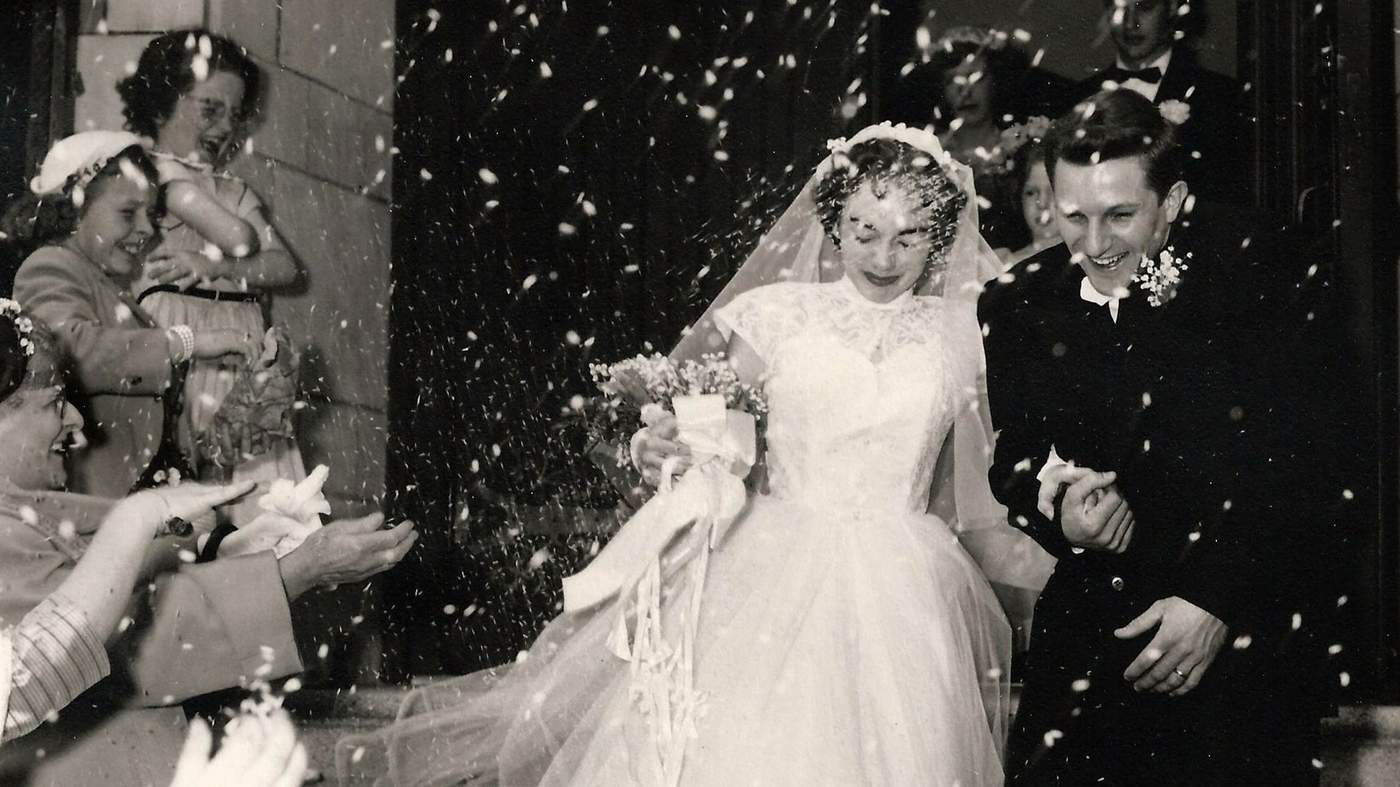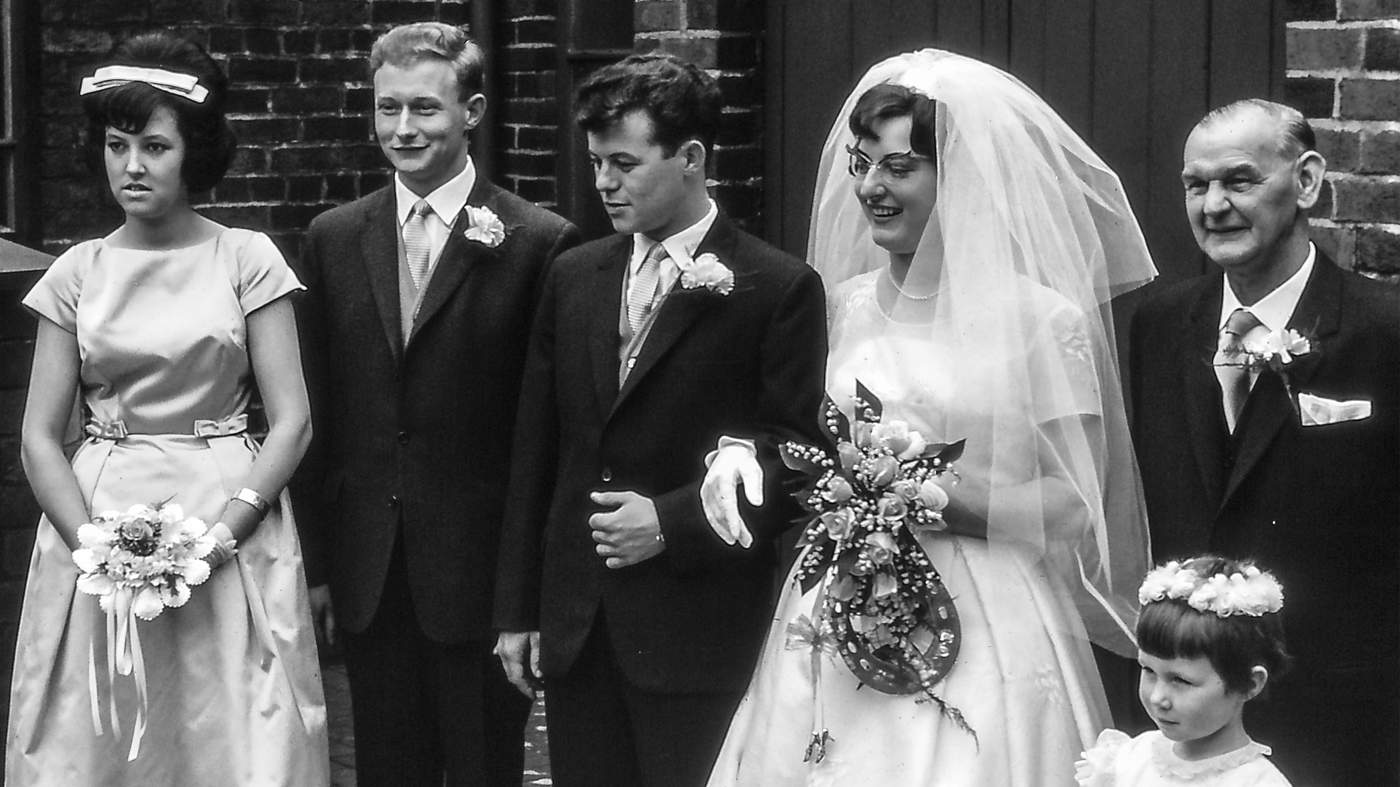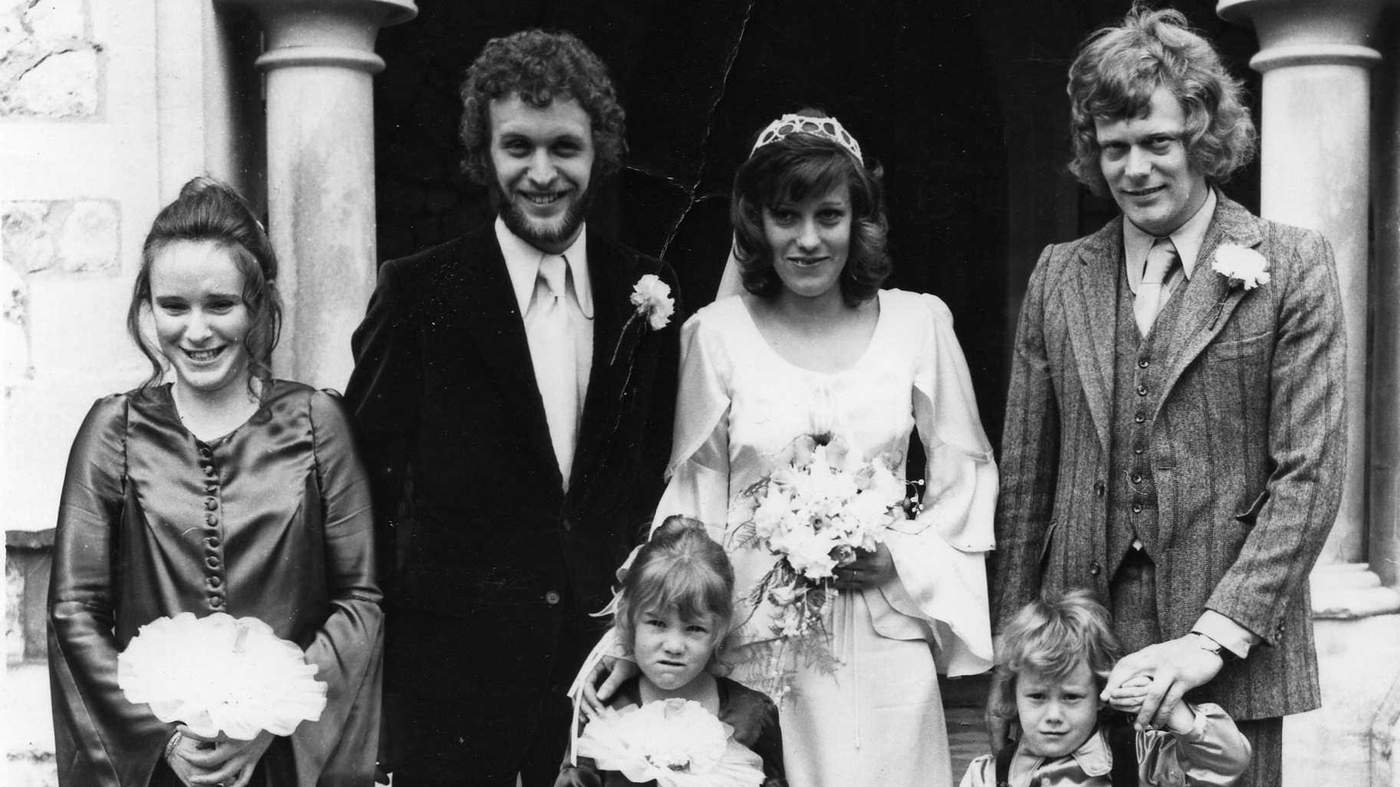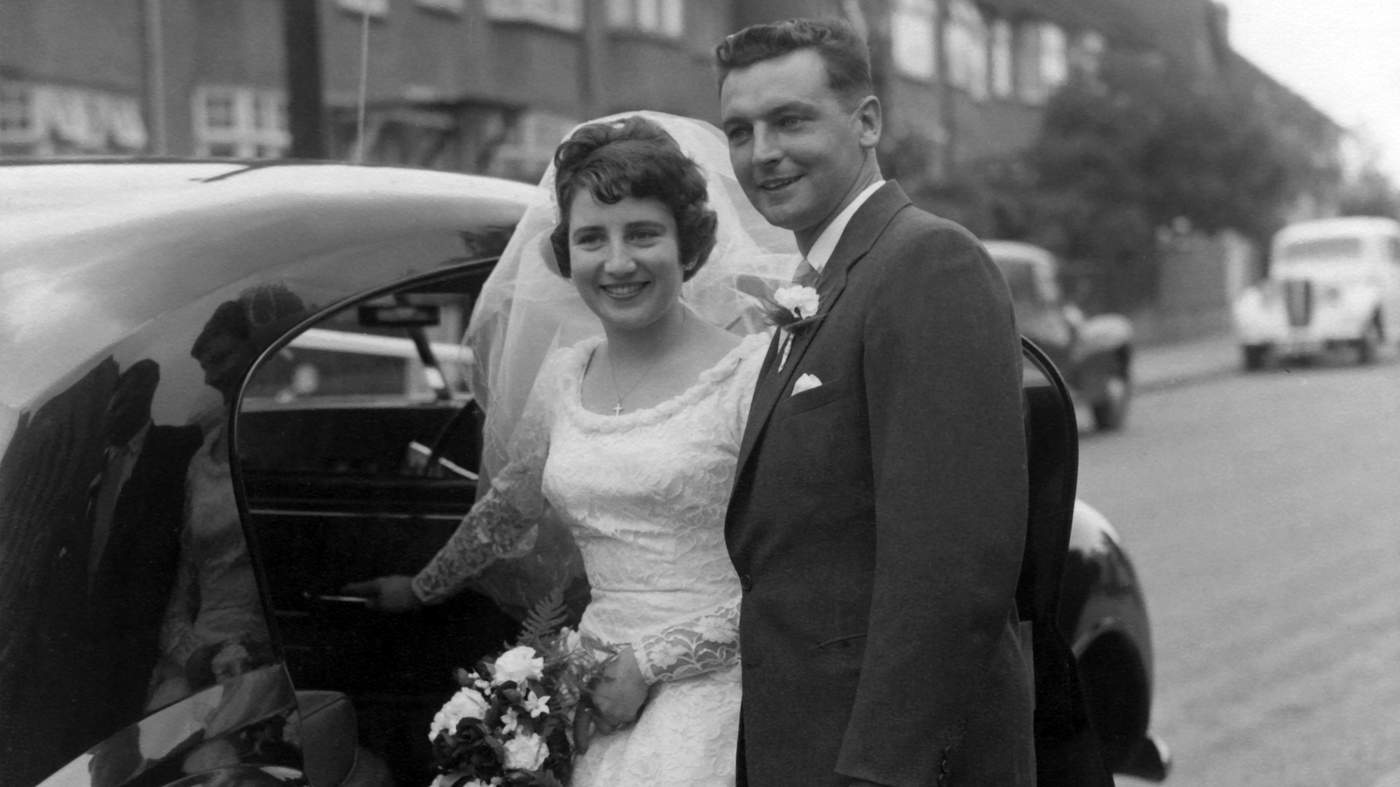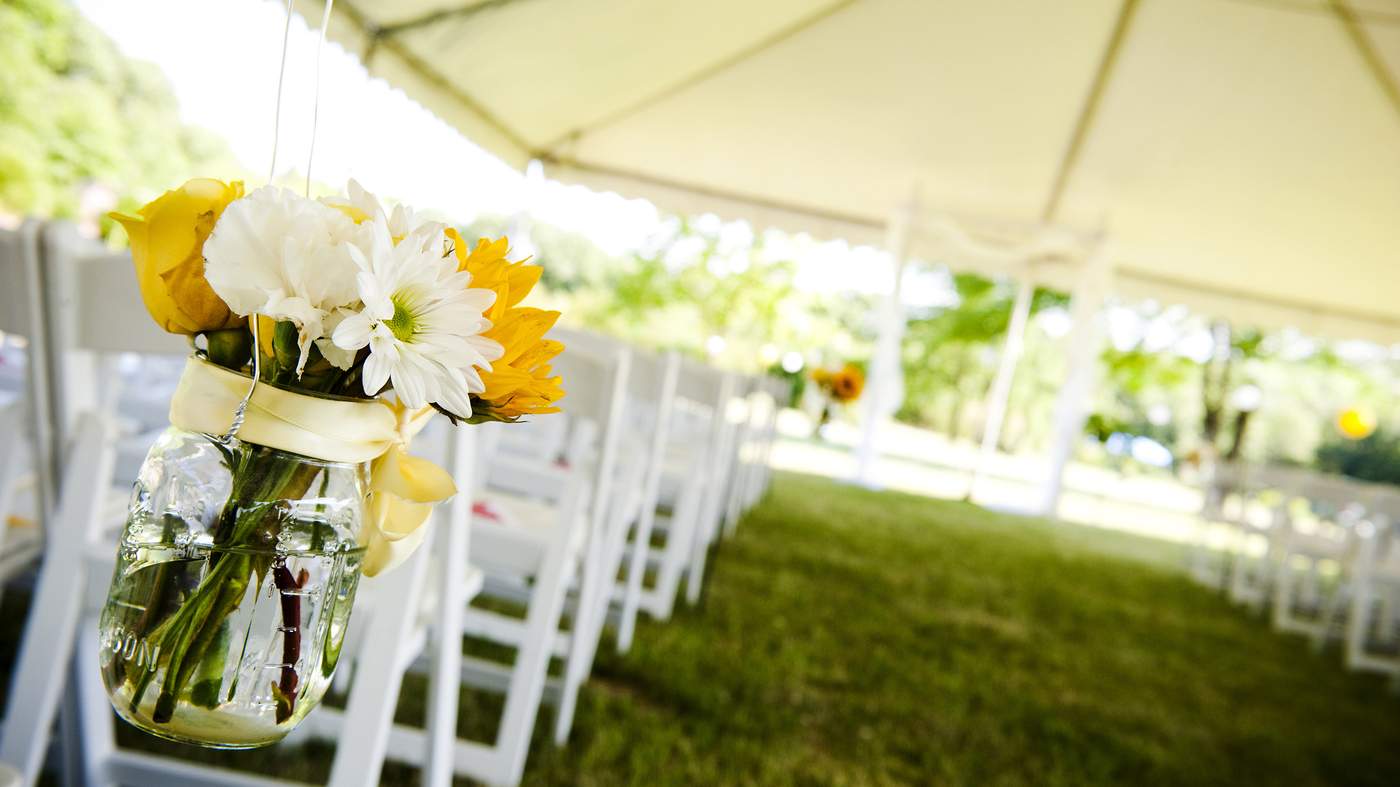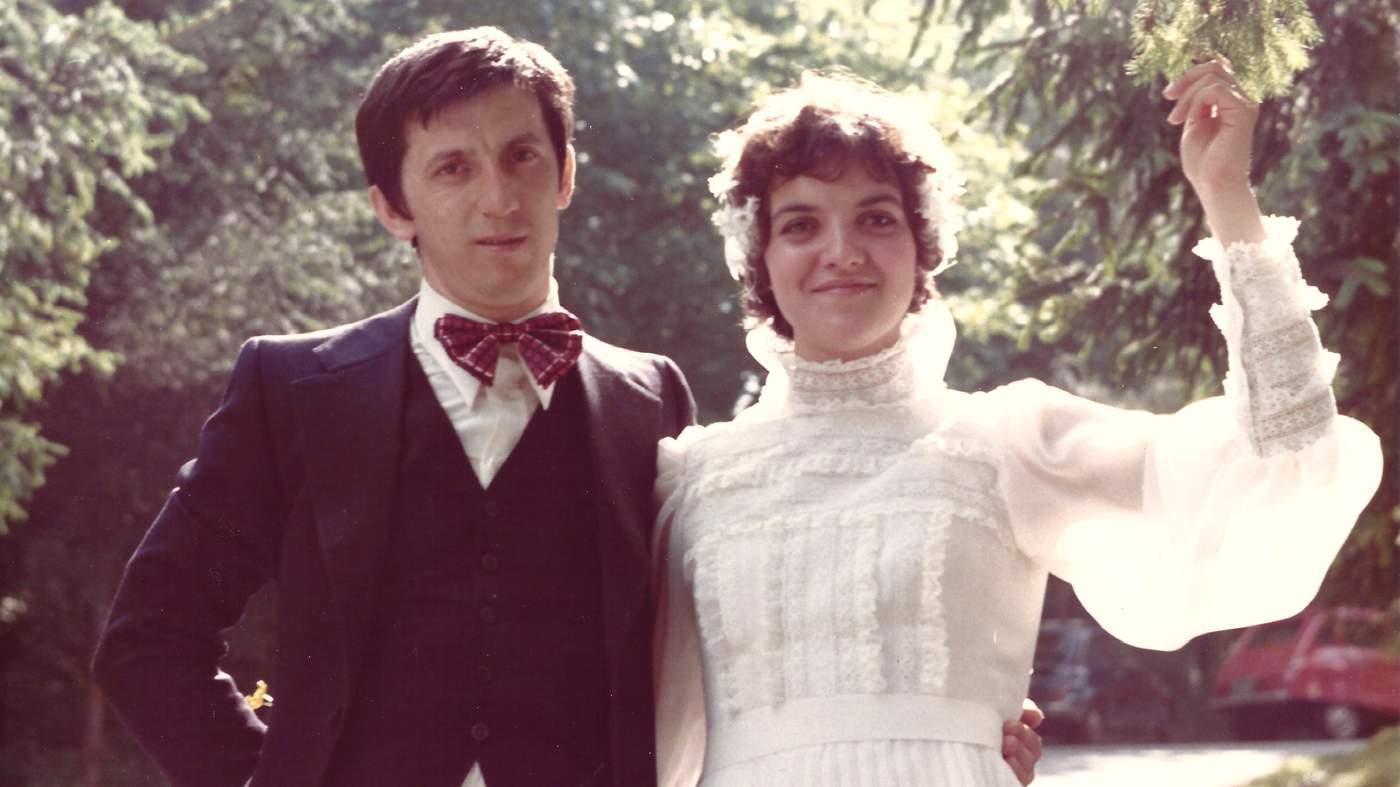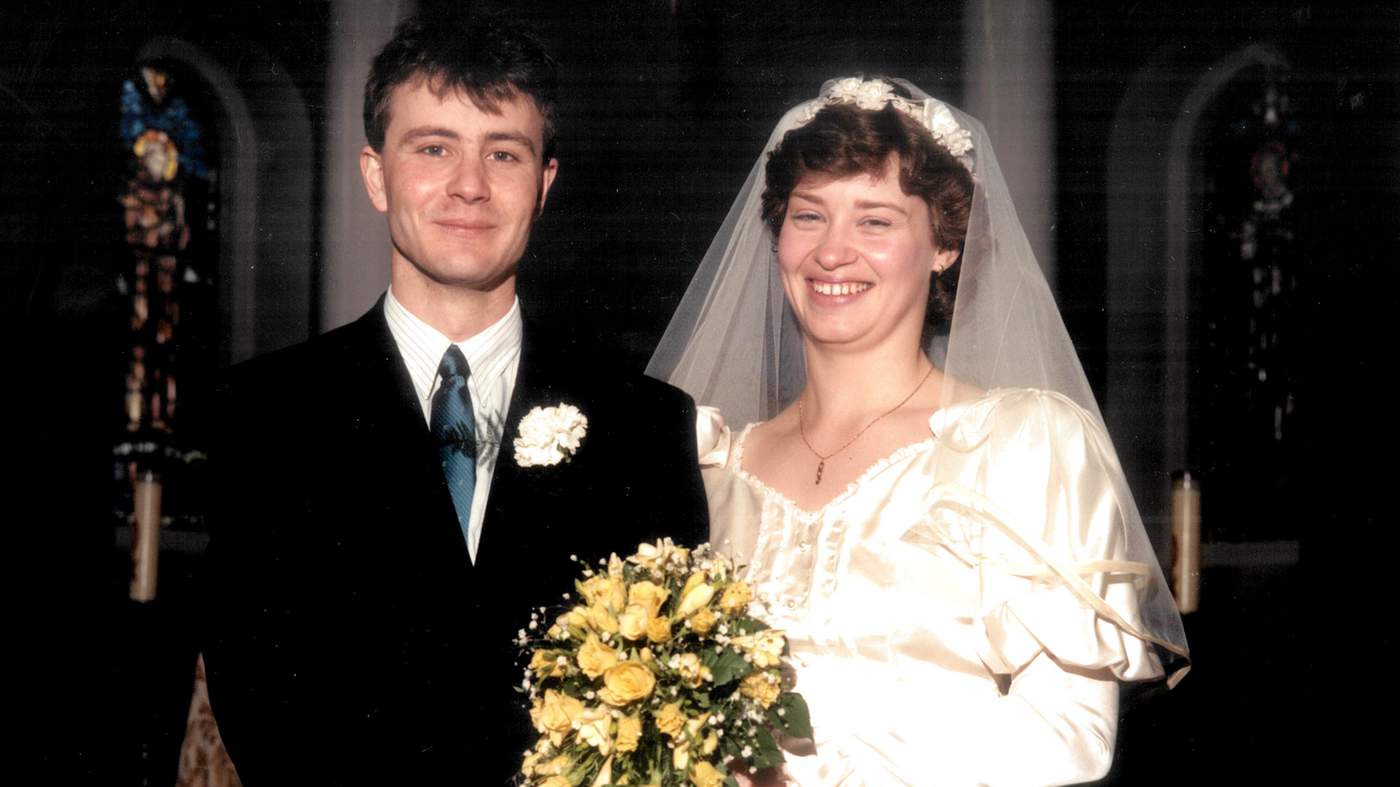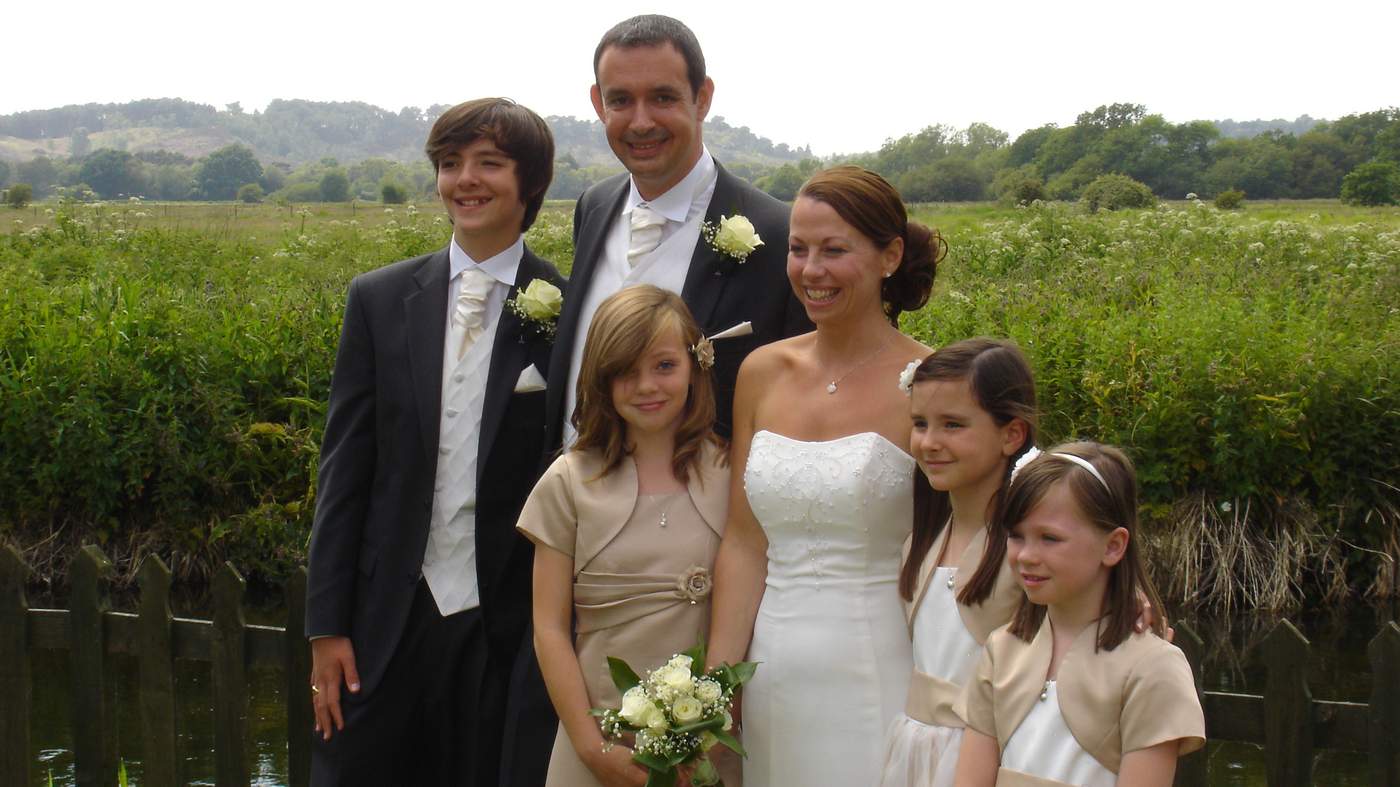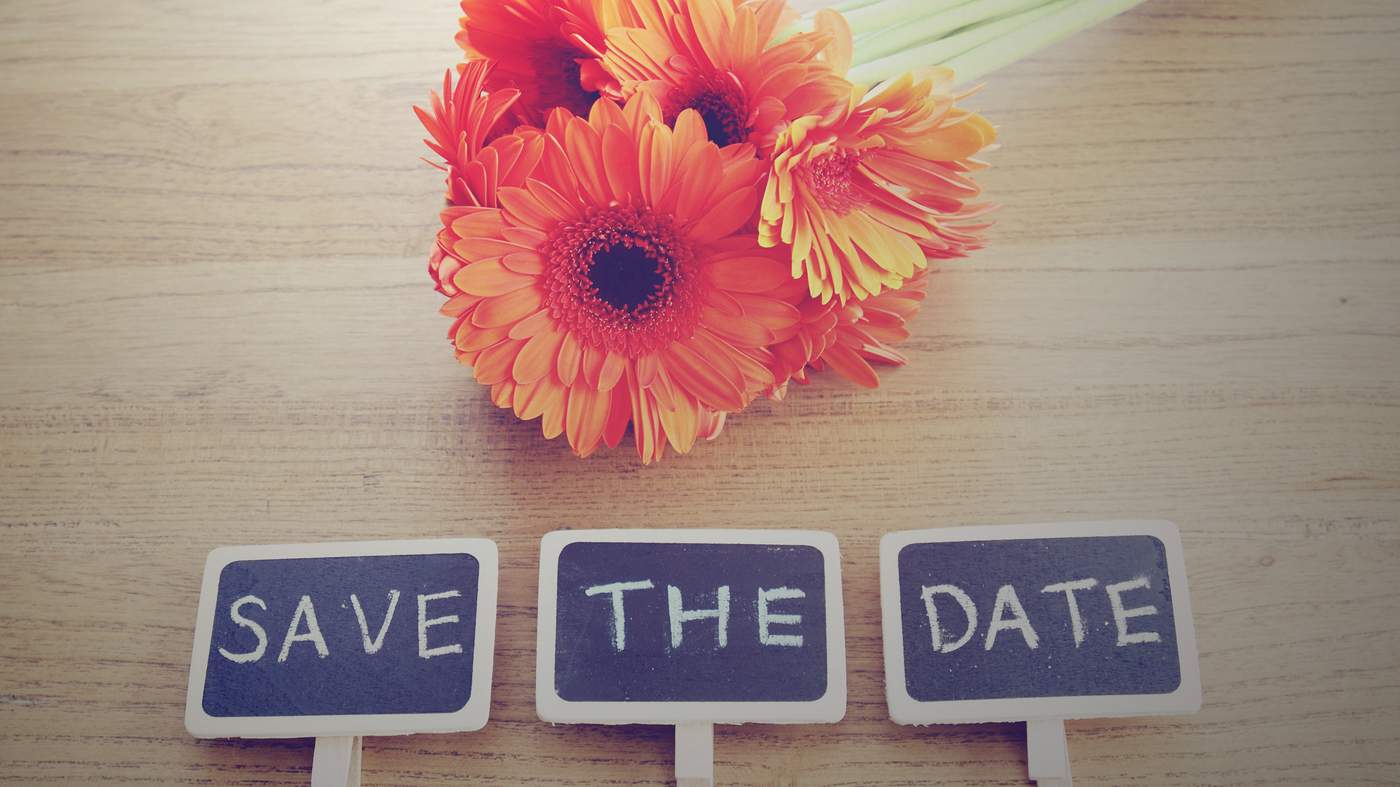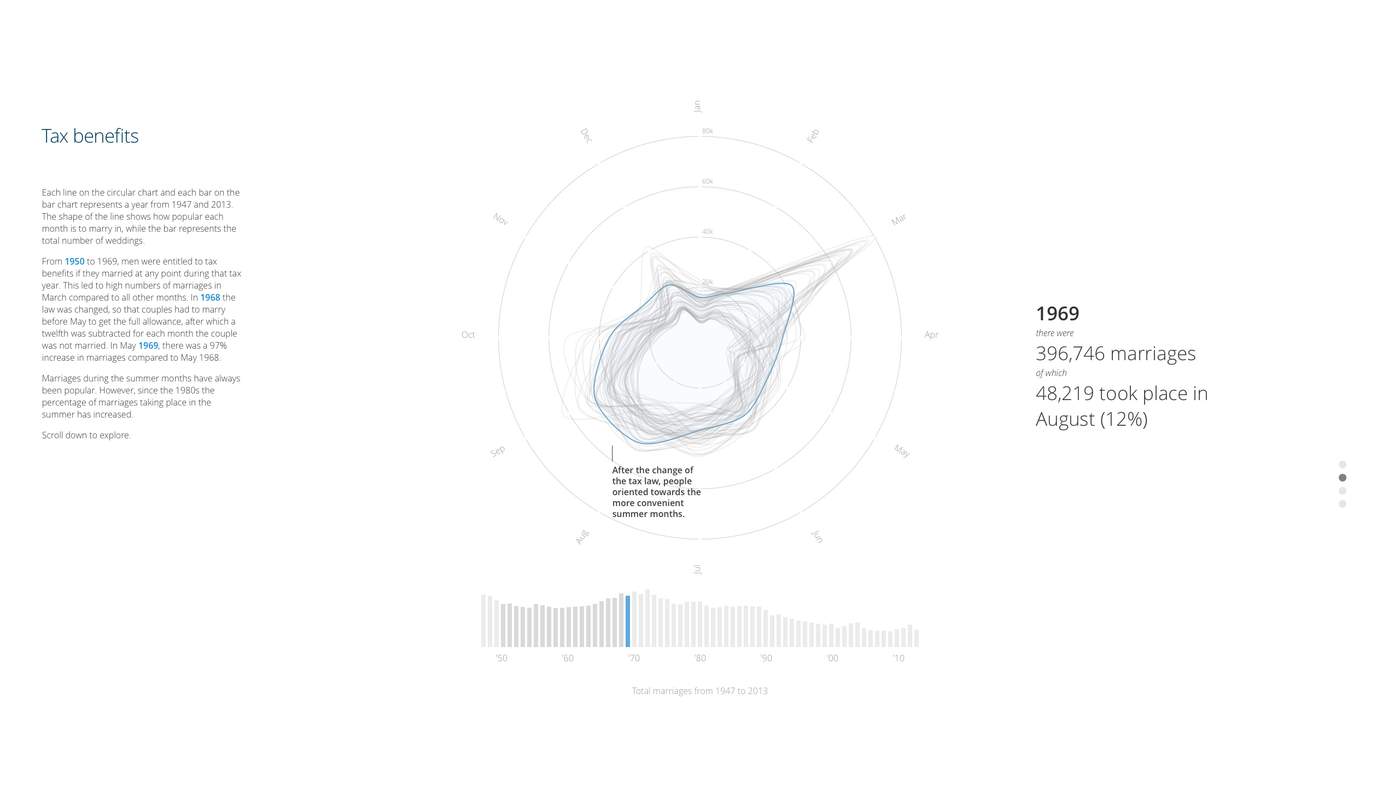In 1947 – the earliest year that we have data available on the month people got married in – there were 401,210 weddings in England and Wales.
The most popular month to get married in was August, closely followed by December and April.
Number of marriages in each month of 1947 in England and Wales
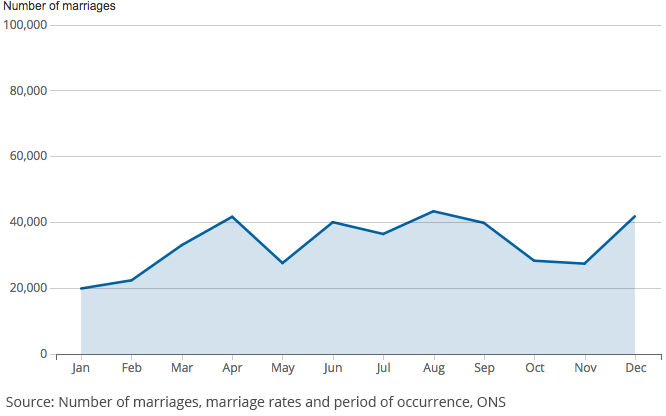
One of the most talked about weddings in this year took place in the fairly unpopular month of November.
This was between Princess Elizabeth Windsor and Philip Mountbatten, Duke of Edinburgh (a.k.a the Queen and Prince Philip).
They got engaged following the Queen's 21st birthday in April 1947 and married seven months later.
As we move into the 1950s and 60s, March becomes the most popular month to get married in . . .
Number of marriages in England and Wales in each month of each year from 1950 to 1967
. . . with another peak emerging in the autumn.
However between 1968 and 1969 we see a big shift away from this pattern . . .
Number of marriages in England and Wales in each month of 1968 and 1969

So just why do we see this pattern emerge and then abruptly disappear?
Number of marriages in England and Wales in each month of each year from 1970 to 1979
Moving onto the 1970s it is clear to see the shift away from the March wedding and the shift towards a summer wedding.
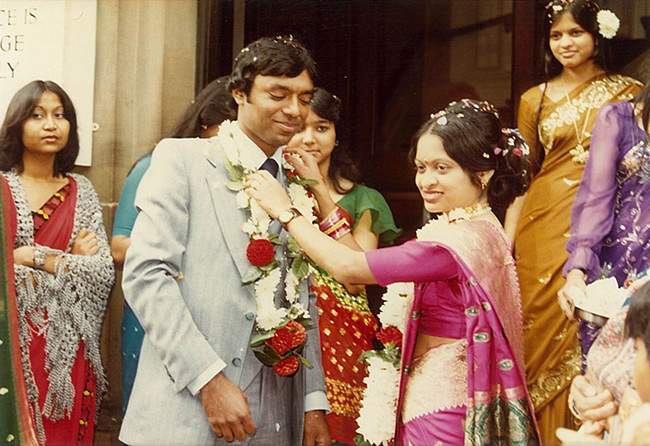
The 1980s sees the complete disappearance of the March peak as the summer months now take over as the most popular time to get married in England and Wales.
Number of marriages in England and Wales in each month of each year from 1980 to 1989
Something which could have also been influenced by one of the biggest summer weddings of all time as Prince Charles married Lady Diana Spencer on 29 July 1981.
Summer cements itself as the most popular time for weddings at the turn of the century . . .
Number of marriages in England and Wales in each month of each year from 1990 to 2010
. . . but the lines moving lower down the chart illustrate how far fewer weddings there are these days compared with the 1960s and 70s.
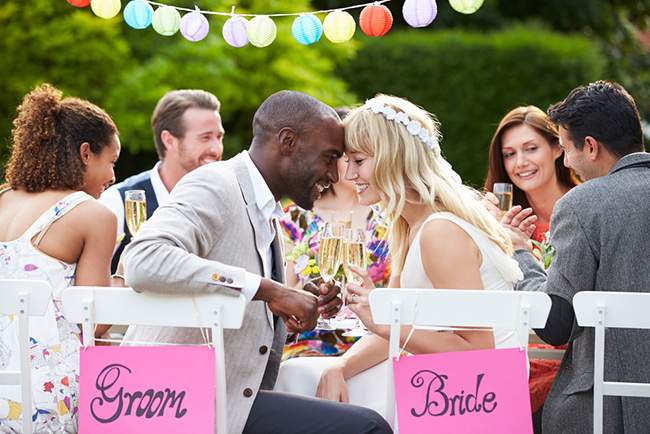
Part of this may be to do with more people getting married and registering their weddings abroad as these marriages would not show up in our figures.
But whatever the reason - we do still love a royal wedding - one of the 249,133 weddings in 2011 was viewed by millions of people worldwide:
So, we have established that without any tax allowances skewing people's choices, the most popular time of year to get married in England and Wales is the summer - even with our unpredictable weather!
But what about particular days and dates? We have data on weddings by date and day of the week in England and Wales from 1995 to 2013 and we have analysed this data to find out what else may affect people's preferences.
Here are some things to note:
1. A fall in Saturday weddings
The popularity of Saturday wedding has waned in recent times– in 1995, 68% of weddings took place on a Saturday – but in 2013 this had fallen to 53%.
Percentage of weddings that took place on a Saturday 1995 to 2013
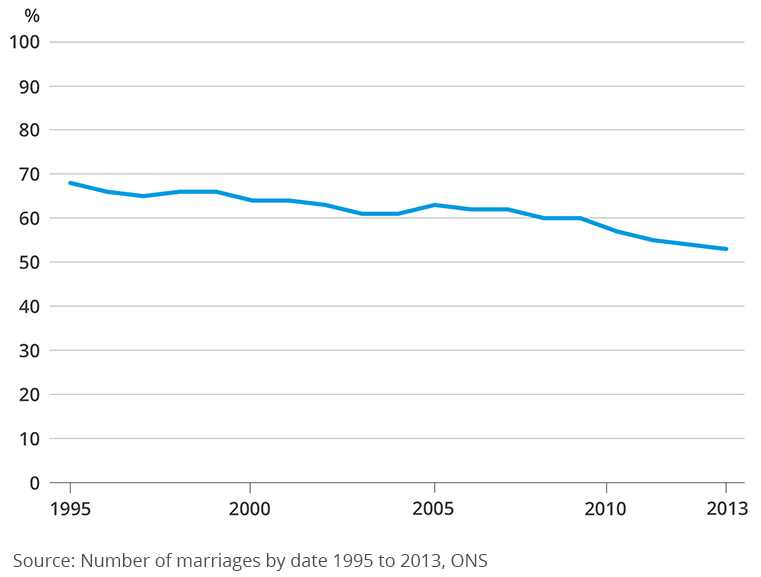
Possible reasons for this are - the savings that can be made by having a wedding on a different day of the week and the rising number of 2nd or 3rd marriages which tend to have more low key weddings.
2. Superstitions play a role
Weddings that took place on Fridays

The average number of weddings on a Friday was 850 but on Friday 11 November 2011 there were 1,529 weddings, as this date (11/11/11) was seen as lucky.
However other Fridays are avoided - the average number of weddings on a Friday that fell on the 13th day of the month was 448.
3. Christmas Eve and New Year’s Eve are more popular for weddings than Christmas Day and New Year’s Day
While some people opt for a wedding on Christmas or New Year's Eve, the days themselves are pretty quiet for weddings.
Weddings that took place at Christmas and New Year

Between 1995 and 2013 the average number of weddings that took place on Christmas Day was five.
For New Year's Day (excluding the first day of the new millennium) the average was 26.
We remove the data for New Year’s Day in the year 2000 as this was a particularly popular day for a wedding - in fact, 249 couples got married on this day.
4. People love a Valentine's Day wedding!
Weddings that took place on Valentine's Day
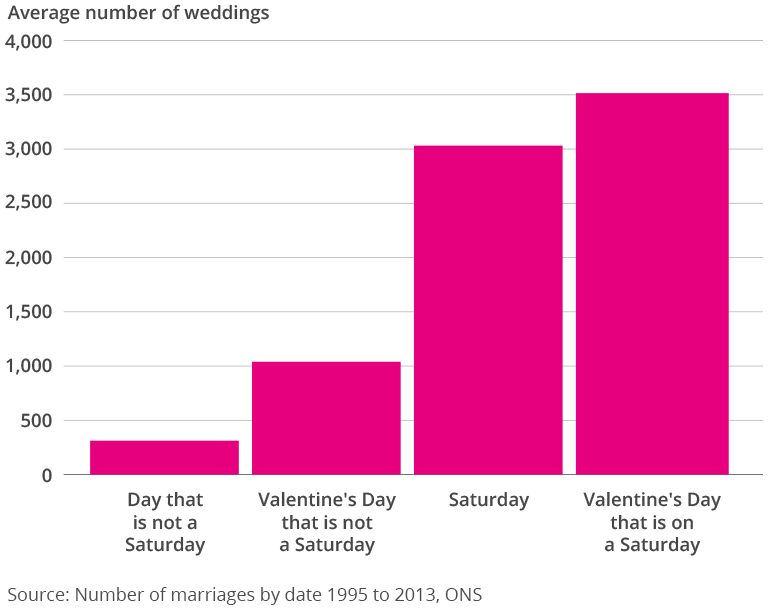
The start of the year is, in general, not a very popular time of year to get married but February 14 –St Valentine’s day - stands out.
The average number of weddings on a Saturday was 3,037 but a Valentine's Day Saturday had slightly more - an average of 3,515 weddings.
The difference for other days of the week was even starker- the average number of weddings on a non-Saturday was 313 but the average number on a Valentine's Day that fell on a non-Saturday was 1,039 - over three times higher.
Tell us what you think
This article is a new format for us here at the ONS - please share your views on it by filling out this very short survey.

